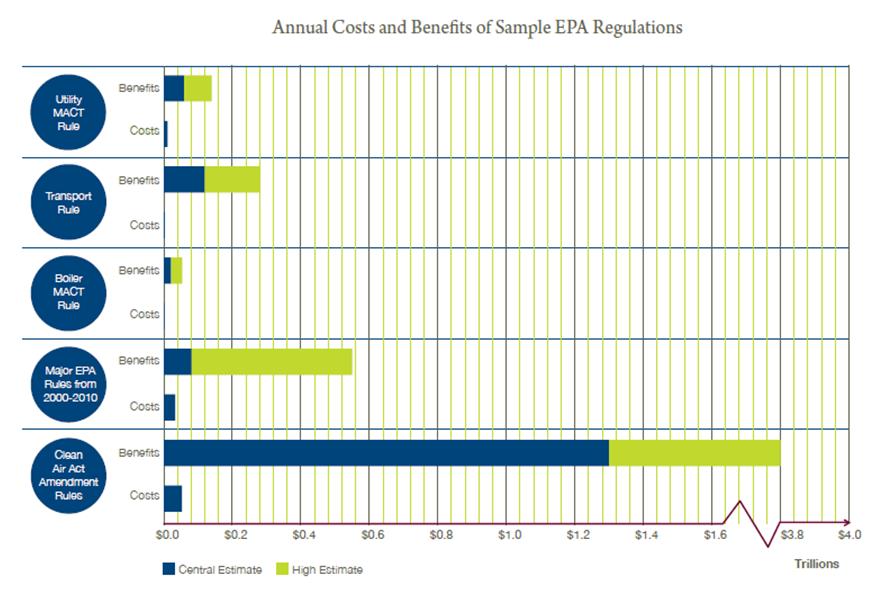In a state where regulatory issues are driven by “crony capitalism” a has proposed federal bill could give industry a blank check here in Texas.
The Regulatory Accountability Act (RAA) (S. 1606/H.R. 3010) is a radical measure that would severely weaken laws that protect our health, safety and the environment. A new paper from the Coalition for Sensible Safeguards, Impacts of the Regulatory Accountability Act: Overturning 65 Years of Law and Leaving Americans Less Protected, reveals how the proposed bill would cripple the federal regulatory process, placing the public in harm’s way.
“The striking examples in this paper show that the Regulatory Accountability Act is designed to undermine our regulatory system, not improve it,” said Katherine McFate, president of OMB Watch. “For decades, agencies have been working to make our air and water cleaner, to improve the safety of the products we buy for our homes and families, and to reduce our children’s exposure to highly toxic lead. This legislation would make their work harder, and everyday Americans would feel the consequences.”
The RAA not only would change procedural and evidentiary requirements, but also would add more delays and set an even higher bar than currently exists for issuing needed protections. In effect, the bill would hamstring all rulemaking agencies and squander their resources, hurting the American people in the process.
The RAA would negatively impact rulemaking in several key ways:
- Making the “least costly” rule the default choice, instead of promoting the public good
- Super-mandating cost-benefit analysis even when it would be misapplied
- Shifting to formal rulemaking processes that thwart appropriate give and take
- Eliminating hybrid rulemaking that is often the best approach
- Allowing judicial review of all agency judgments, undermining scientific findings
Agencies have already had unconstructive experiences with similar formal rulemaking procedures and a “least costly” rule provision; industry has used them to interfere with and delay commonsense standards and safeguards.
A classic example of this is the Food and Drug Administration’s “peanut butter” rule, which was developed several decades ago. After a July 1959 press release revealed that the largest brands of peanut butter contained only 20 percent peanuts, the FDA began the rulemaking process according to the formal rulemaking procedures provided in the Food, Drug, and Cosmetic Act (FDCA). The FDA’s proposed rule provided that peanut butter must contain at least 95 percent peanuts; however, after recognizing that consumers preferred peanut butter that spread more easily, the FDA reduced the standard to 90 percent in 1961. The industry petitioned the FDA for a formal hearing (in accordance with the formal rulemaking provisions in the FDCA) to argue for the standard to be set at 87 percent. The formal hearing alone added almost five months to the rulemaking process and resulted in a transcript of approximately 8,000 pages primarily discussing whether peanut butter should contain 87 percent or 90 percent peanuts.
Nine years later, in July 1968, the FDA finalized the standard at 90 percent. Yet, the battle continued for another two years as a result of the industry’s challenge of the rule in the Third U.S. Circuit Court of Appeals. Ultimately, the court affirmed the agency’s finding, noting that, based on the formal record, even if 87 percent was a reasonable alternative, the FDA’s 90 percent standard was equally reasonable and thus should not be overturned.
The paper highlights many other examples of how the Regulatory Accountability Act would severely impede the federal government’s ability to protect its citizens.
Robert Weissman, president of Public Citizen added, “The RAA aims to hamstring consumer, environmental and other regulating agencies and empower Big Business to stop agencies from issuing new rules. The bill delivers a clear message: Giant corporations should not be subject to law and order.”
Click here to read the full white paper – Impacts of the Regulatory Accountability Act: Overturning 65 Years of Law and Leaving Americans Less Protected – by the Coalition for Sensible Safeguards.
Read Full Post »



